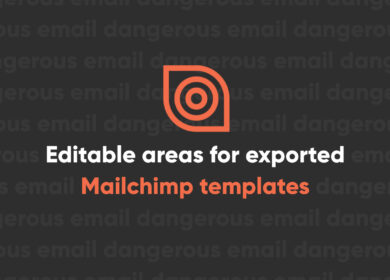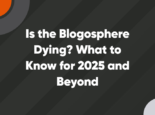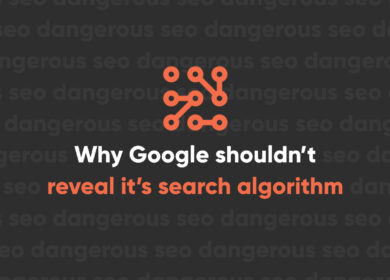
How Our Marketing Team Uses AI: Real Applications in 2025
AI tools are everywhere, but which ones are actually helping marketers save time?
With a wide array of AI marketing tools available, it’s tricky to know which tools are worth your time – you know, the ones that might actually improve your efficiency and cut down on the tedious tasks clouding your day-to-day. And even after deciding which tools to try out, determining the best ways to use them can take time, too.
Back in early 2024, our marketing team started testing new AI tools to figure out what works best on both an individual and a team level. And now, over a year later, we’re following up with them to see which tools they use most in their day-to-day to increase efficiency and improve our marketing agency's work.
Whether you’re looking for a brainstorming partner, a copyeditor, or someone to take meeting notes for you, our team has figured out ways to use AI to improve internal processes. Hear their opinions on AI and the everyday use cases that you can try out in your own day-to-day.
Content Creation & Research: Using AI to Enhance Creativity
While many have discussed AI as a threat to content creators, our content team has fully embraced AI into its processes and workflows, using it as an indispensable brainstorming partner and editing tool. Claire Page, Digital Copywriter, shared that she uses AI as a tool to help with wording, especially when she hits roadblocks or needs a fresh perspective.
We’ve all experienced writer’s block, and having a tool that is readily available to bounce ideas off of is a major asset to the content team. Between crafting high-quality drafts and getting feedback on revisions, AI is an incredible tool to have in our back pockets.
AI Tools for Content: ChatGPT, DALL-E, Grammarly, Claude AI
Content Marketing Use Cases:
- Generating content topics and rough drafts from detailed outlines
- Brainstorming creative elements and taglines
- Creating user personas from audience research
- Converting meeting notes into actionable summaries
- Generating unique post images with DALL-E
- Researching technical topics and industries
- Reviewing content drafts, checking for errors, and identifying any holes
- Ideating potential keywords
"AI has become an indispensable part of my copywriting toolkit, allowing me to blend creativity with efficiency. ChatGPT is my current go-to, as I use it to generate fresh blog topics, write rough drafts from detailed outlines, and brainstorm creative elements like taglines. It’s also useful for simplifying complex concepts, whether that’s crafting user personas from audience research or breaking down highly technical subject matter." — Greg, Senior Copywriter
Email Marketing: Using AI to Drive Higher Open Rates
Email marketing relies on sending carefully crafted, personalized emails that drive both high open rates and conversion rates. And ensuring that each email is on-brand, shares the right message, and is appealing to the right audience segment is time-consuming. Having a tool that can provide a starting point for subject lines, review email copy and make suggestions based on brand guidelines, and generate interesting ideas to test out with an audience is invaluable to our email team.
AI Tools for Email: ChatGPT, Gemini, Grammarly
Email Marketing Use Cases:
- Reworking email copy for better engagement
- Generating creative ideas
- Crafting targeted subject lines
- Gathering initial insights and resources
- Getting new ideas on workflows and segmentation
"To get the best results, I always provide detailed context, such as the brand's tone and the intended consumer. The key is using AI as a starting point rather than as a complete solution." - Molly Mclay, Email Marketing Specialist.
Search Engine Optimization: Using AI for Smarter Optimizations
AI tools complement the work our SEO team is doing by automating some of the repetitive tasks and freeing up more time for the strategic data analysis and technical website optimizations our team thrives on. With AI, our SEO team is more efficient, blending AI-generated insights with their own expertise to uncover new ways to grow website visibility. And with AI-generated results a growing feature in the SERPs, using AI can be crucial for growing visibility across traditional and AI-generated search results, like SearchGPT. By relying on a range of AI tools, our team can better understand the user journey, identify and troubleshoot on-page website issues, and automate the smaller tasks. Additionally, we are offering generative engine optimization services to help brands show up more often in conversational LLM searches.
AI Tools for SEO: ChatGPT, Gemini, Grammarly, Microsoft Clarity
SEO Use Cases:
- Creating custom GPTs for specific tasks
- Automating meta description writing
- Generating complex regex strings for reporting
- Creating basic custom code
- Solving complex Google product queries
- Understanding heatmaps with AI-generated insights from Microsoft Clarity
“I’ve created custom GPTs for specific tasks like writing meta descriptions and forming long regex strings to use as filters in Looker Studio reports. Because custom GPTs are finely tuned to perform a specific function, no prompts are needed and the output is consistent.” – Andy Heatwole, SEO Manager
Common themes and insights
Across our team’s experiences, some common themes stand out—insights that anyone, regardless of industry, can use to incorporate AI into their day-to-day work.
Using AI as a collaborative partner
Our team doesn’t view AI as a replacement for their regular workload. Instead, we rely on AI to help us through creative blocks, edit our work for clarity and consistency, give us a jumping-off point for a new project, and automate those menial tasks that allow us to focus on the creative, strategic work we do best. AI should be a partner in the work you’re doing. And now that AI agents–tools designed to perform specific automated tasks on your behalf–are entering the chat, it’s even more important than ever to identify those areas of your workflow that could be more efficient with AI as your partner.
The importance of added context
Your brain has way more context clues on whatever it is you’re working on than the AI tool does. When you’re using AI, make sure to provide as much context as possible to get better outputs. If the AI doesn’t understand your business, goals, and voice, you’re going to get an extremely generic output, and it's going to feel like a major waste of time. Be as detailed as possible to get results that you'll actually find valuable.
Experimentation is key
All of our team members took the time to figure out how to best use AI in their individual workflows. Experimentation is key to discovering the AI tools that will benefit you most, and then understanding how to use them in a way that helps you save time and resources. You’ll need time to determine what fits your needs best by identifying the parts of your work day that are time-consuming, repetitive, and distracting you from the strategic, creative work you could be doing.
Even if at first you're not sure AI could be used to support those tasks, you can start small. For instance, if you occasionally upload contact lists to your CRM, you likely have to edit the fields to match the exact requirements of your CRM. Instead of doing that manually, you can have AI do it for you, updating the form fields and saving you a bunch of time. While it's not a ground-breaking use case, it's still a way to cut down on the time spent on a more menial task so you can get back to the work that matters most. And the best part is, as new technologies come along, we'll continue to test those out too. We're currently trying out Surfer SEO's AI tools, and we are always trying to find new ways to learn and grow.
AI presents challenges
While all of the use cases mentioned are extremely helpful, that's not to say we haven't run into our fair share of issues with AI. That's really where trial and error comes in; we have to understand how to best work with and prompt the AI tools to get better outputs.
Some things we learned while using AI include:
- Don't rely too heavily on AI for automation. There has to be a balance, and humans should be checking on the work AI is doing to ensure everything is running smoothly.
- AI isn't perfect. AI tools make mistakes and hallucinate responses, so be on the lookout for that. Fact-checking is always a good rule of thumb!
- Review for brand voice. AI often gets voice and tone wrong, and if you don't include the specifics of your brand, it will be very generic. Make sure to review and edit copy for your brand's voice.
- AI would rather provide an answer than admit that it doesn't know. We've run into issues with AI giving blatantly wrong answers rather than admitting to not knowing. Critical thinking is a crucial part of using AI.
Incorporating AI in 2025
If you haven’t already tested AI, it’s time to figure out how it can help you increase productivity and take some of those more tedious tasks off of your plate. AI is only going to continue ramping up in 2025, so take advantage of all of the helpful tools that are now at your disposal.
So, how will you incorporate AI into your workflow in 2025? Start small, experiment, and see how these tools can transform the way you work. And if you’d like to work with a digital agency that prioritizes strategic, creative work by finding ways to cut down on repetitive tasks using AI, we’re your agency. We can support your team as you integrate AI solutions, recommend AI tools to your team, or act as your digital marketing partner. Reach out to schedule a time to talk 2025 goals.





